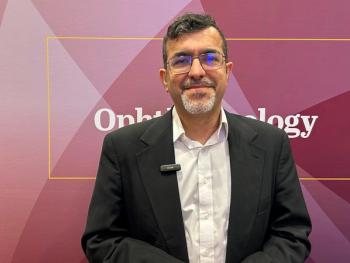
Determining best cases for IOL implantation in children
When the topic of IOL implantation is on the table, the age of the patient does make a difference, according to pediatric expert Courtney Kraus, MD, who spoke at the Wilmer Eye Institute’s 27th annual Current Concepts in Ophthalmology conference.
When the topic of IOL implantation is on the table, the age of the patient does make a difference, according to pediatric expert Courtney Kraus, MD, who spoke at the Wilmer Eye Institute’s 27th annual Current Concepts in Ophthalmology conference.
“IOL implantation is an option for some, but not all, pediatric patients. When circumstances warrant an IOL, the surgeon must anticipate the expected myopic shift and plan accordingly,” she said during her presentation, “IOL Selection in a Pediatric Surgery Case.”
Dr. Kraus spoke of some current trends in IOL use in the pediatric population and addressed reasons why aphakia correction differs between children and adults.
- First, a child’s eye experiences multiple periods of growth during early infancy and childhood. “Additionally, refractive elements of the eye undergo radical changes,” Dr. Kraus said.
- Secondly, there is a risk of amblyopia development, especially if the visual input is “defocused or unequal” between the two eyes.
- Third, aphakic or pseudophakic glaucoma risks are higher in the pediatric population.
- Lastly, social and environmental factors affect short- and long-term outcomes, which may influence the choice of treatment.
Currently, optical aphakia correction in children entails aphakic glasses, aphakic contact lenses, and primary or secondary IOL implantation. There are advantages and disadvantages to each.
“Numerous factors play a role in the decision of what means is employed to correct for aphakia: unilateral versus bilateral cataracts; age of the patient; and family/social factors,” Dr. Kraus said.
She added, “The advantages of leaving the baby aphakic and visually rehabilitating the eye with a contact lens include the ability to change the contact lens power as needed to keep up with the rapidly growing eye’s refractive needs, not subjecting the baby to the potential for complications and the need for additional surgeries seen frequently with IOL implantation, and not requiring spectacle wear for the first few years of life.”
However, in older children the decision to place an IOL is “usually pretty clear,” she noted.
Pursuit of IOL implants
At present, IOL implantation at the time of cataract surgery is commonly pursued in patients who are about 1 year of age. Dr. Kraus mentioned a survey of ASCRS members that addressed IOL implantation patterns. The “vast majority” of respondents said they waited until after the patients were 1 or 2 years old in bilateral cases; however, there are circumstances, she pointed out, where earlier implantation is preferred.
Dr. Kraus noted how bilateral congenital cataracts are generally left aphakic. Correction of bilateral aphakia can be accomplished via use of glasses or contact lenses; aniseikonia is generally not as significant.
“While there is much more consistency of practice with bilateral cataracts, the issue of how to correct for aphakia in unilateral cataracts is far more complicated,” she said.
In recent years, a protocol was created for how best to handle aphakia in unilateral cataracts. This came about via the Infant Aphakia Treatment Study (IATS), which was formed as a multicenter effort that looked prospectively at infants undergoing unilateral cataract surgery who were between 28 days and 7 months of age.
Treatment variables were primary IOL implantation at time of cataract surgery versus optical correction with an aphakic contact lens. Preliminary results at 1 year and the final assessment at roughly 5 years of age “failed to reveal a significant difference in visual acuity” between the two study arms, Dr. Kraus reported.
“The story was different when it came to frequency of adverse outcomes. By 5 years of age, at least one adverse event had occurred in 56% of the contact lens group, compared with 81% of the IOL group. The most common adverse events were lens reproliferation in the visual axis, pupillary membranes, and corectopia,” she said.
Only two in the contact lens group developed lens reproliferation into the visual axis, and one developed corectopia. However, in the IOL group, 23 developed lens reproliferation into the visual axis, and 16 developed pupillary membranes. Glaucoma and glaucoma suspect status was equal in frequency between two groups.
As a result of the higher rate of adverse events, 72% of children implanted with an IOL had at least one additional surgical procedure.
“After much deliberation among participants, the IATS committee released the following conclusion, stating that the study did not demonstrate any visual benefit from implanting an IOL at the time of unilateral cataract surgery in infants younger than 7 months of age,” Dr. Kraus said.
Further, “children who had IOL implantation had more adverse events and required reoperations to clear visual axis opacities. In some cases, the benefit of eliminating contact lens issues by implanting IOL weighed against the drawbacks associated with early IOL implantation,” she said.
While there appears to be no advantage in visual outcome at age 5 if an IOL is implanted, Dr. Kraus mentions other advantages to primary IOL implantation.
“The most obvious to the families involved is that it’s not necessary for the baby to wear a contact lens. The extent to which this is an advantage will differ among patients and their families. Some caregivers can become quite adept at handling the contact lens and some babies adapt really well. Yet, eliminating this task would be welcomed by some; in some family situations, the effort required to successfully wear a contact lens provides an insurmountable barrier. In addition, the cost of wearing a contact lens can become a significant burden,” she said.
Who should get an IOL?
According to Dr. Kraus, an IOL may be recommended in cases where the physician and family agree that the difficulties of contact lens wear outweigh the potential for more procedures and adverse events. In addition, the cost of wearing contact lenses over the years can be a financial strain.
In theory, advantages to primary IOL implants at time of cataract surgery entail having constant optical correction during a child’s early years of visual development, a chance to place the IOL within the capsular bag and avoidance of contact lens use.
“It’s worth noting that the placement of secondary IOLs within the capsular bag can also be accomplished successfully with respect to the pediatric population. Surgeons operating can facilitate capsular IOL placement later on by limiting size of anterior capsulotomy to 5 mm and performing limited anterior vitrectomy,” Dr. Kraus said.
As for selection of an IOL with appropriate power of implantation in pediatric eyes, such a job can be difficult, according to Dr. Kraus, who noted that inaccuracies in formulas for IOL power calculation are known to exist in small eyes and may be exaggerated in the infant’s eyes.
“The most significant consequence of implanting an IOL fixed power in an eye that is still at its steepest point on its rate of axial elongation is that the potential is there for a large myopic shift,” she said, noting varying degrees of myopic shift have been reported. “This individual variability seems most difficult to predict in the youngest patient populations.”
In response to the expected shift, she said the targeted refractive outcome is adjusted based on age to compensate for the anticipated myopic shift. “We intentionally leave hyperopia or undercorrect to allow for them to grow into their refraction,” she said. “In the absence of the ability to predict postoperative refraction with near certainty IOL exchange in highly myopic patients can be performed.”
Piggyback IOLs
Use of piggyback IOLs or polypseudophakia in pediatric cataract surgery was first noted in the literature in the mid-90s, according to Dr. Kraus. She said that in children the piggyback IOL provides the extra power not accounted for by the bag lens. “Placement of the piggyback IOL is chosen for patients and families who we would otherwise expect poor compliance with regard to spectacles or contact lenses,” she said.
“When choosing a piggyback power aiming for plano or mild hyperopia is desired so the eye will grow into a more myopic refraction. Glasses are generally given when the child reaches refraction greater than -4. The difference with pediatric piggyback IOLs from a standard adult is that the IOL is placed temporarily and removed once biometry predicts emmetropia with a single bag lens,” she said.
Multifocal lenses in children
Limited literature currently exists for the multifocal lens use in children. “At this point, most pediatric cataract surgeons leave such lens use as an option only for those teenage patients who have presumed to reach visual maturity,” she said.
Dr. Kraus said IOL implantation may work for some pediatric patients, but it is to be decided on a case-by-case basis.
“Pediatric IOL implantation is not a black-and-white issue. The age of the patient represents a sizable consideration when making this decision. In addition, other factors such as density of amblyopia, unilateral or bilateral cataracts, urgency of visual rehabilitation, comorbidities, surgeon expertise, family, and socioeconomic factors-all contribute to which option is best for the child,” Dr. Kraus said.
What she summarized as most important for the surgeon to realize is that the decision to implant an IOL is “highly individualized.”
“The future of pediatric cataract surgery will continue to provide more information about just which child should receive an IOL and which IOL should be placed in that child,” she said.
Newsletter
Don’t miss out—get Ophthalmology Times updates on the latest clinical advancements and expert interviews, straight to your inbox.



















































.png)


